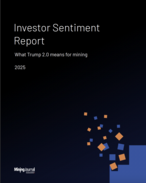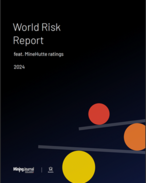This article is 4 years old. Images might not display.
MiningNews.net is making some of its most important coverage of the COVID-19 pandemic freely available to readers. For more coverage, please see our COVID-19 hub. To subscribe to MiningNews.net, click here.
The initial impact of COVID-19, the disease caused by the coronavirus, was resoundingly negative because it started in China and had a significant impact on that country's manufacturing industries which, in turn, hit the prices of minerals and metals.
But as the virus spread into mining regions it forced the closure of mines and, in some cases such as South Africa, Peru and Argentina, the closure of the entire mining sector, delivering a boost to commodity prices as fears of a glut turned to concern about shortages.
That up/down pattern has been maddening for investors who can't see a clear trend in supply and demand, and certainly not in prices - with gold an exception as it reclaims its role as a currency of last resort with a price of US$2000 an ounce in sight for later this year.
Two recent attempts by banks to track the virus have done little to establish an industry-wide pattern, but there is a clearer picture emerging in some commodities with winners and losers starting to make themselves known.
JP Morgan circulated its COVID-19 "impact tracker" to clients on Tuesday with a warning about the potentially significant effect of the disease on mineral supply from important centres of production.
Under the headline "closures and curtailments accelerate in key supply centres" JP Morgan said the effects of COVID-19 had largely been a demand side story because of its impact in China, Europe and the US, along with government and corporate measures to control its spread.
"But what happens when cases and measures increase in supply centres such as Africa and Latin America?" the bank said.
Somewhat annoyingly JP Morgan does not directly answer its own question, perhaps a sign that even the smartest people in the room are also struggling to master a pandemic which is hitting supply and demand in different ways and at different times.
Iron ore, which will be making headlines over the next two weeks energyas the major Australian-based producers, Rio Tinto, BHP and Fortescue Metals Group, file their quarterlies, is holding up well, according to JP Morgan, with the price likely to slip marginally from its current US$85/tonne into "the high $70s" in the December quarter.
Macquarie Bank echoes the optimism of JP Morgan, telling clients that virus-related production cuts had removed about 60 million tonnes of iron ore from the global market, equivalent to 5% of total seaborne supply.
But with shipments from Australia and Brazil recovering the overall iron ore market was stabilising and shifting from a deficit in the first quarter of 2020 towards market balance.
Decoded, the banks appear to be saying that the iron ore profits of the major producers are protected by outages in South Africa, Canada and Peru, which should also mean that dividends will be maintained at last year's levels.
Other commodities covered by JP Morgan in its COVID-19 tracking exercise include:
- Thermal coal. Worse to come because it appears "mispriced" relative to petroleum products with the potential for a price-crushing coal glut to develop.
- Metallurgical coal. Unaffected as yet by COVID-19 but a potential future problem can be seen as global steel consumption declines.
- Base metals. Could be the sector hit hardest with copper the bellwether. Prices have fallen and global exchange inventories have risen materially in 2020, J.P. Morgan said, while also noting that recent mine closures have increased price tension. "Ultimately, however, we see mines coming back in a matter of months which isn't a good sign for prices in the medium term."
- Aluminium. Prices have retreated but the fall is yet to be reflected in material smelter closures. "Weak global demand is likely to weigh on prices further, with London Metal exchange inventory showing a marked increase since March.
- Zircon and titanium minerals. Zircon prices have been weakening since late last year and Chinese property-market stimulus will not be enough to reverse the weakness even with a significant amount of supply offline. Titanium (rutile) prices had been strong but the global pigment outlook is now considerably weaker, the bank said.
- Lithium. Still facing headwinds despite the benefits of Chinese subsidies on electric cars. Spodumene (an ore of lithium) is said to be close to a price bottom of $450/t while a recovery in the market for lithium carbonate has been pushed out into the second half of 2020.
- Manganese and uranium. Potential winners from current and possible extended outages in two of the major producers of both materials, South Africa and Kazakhstan.























